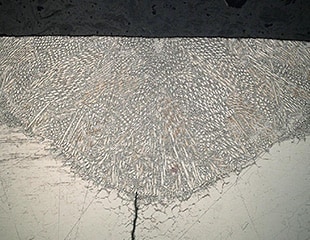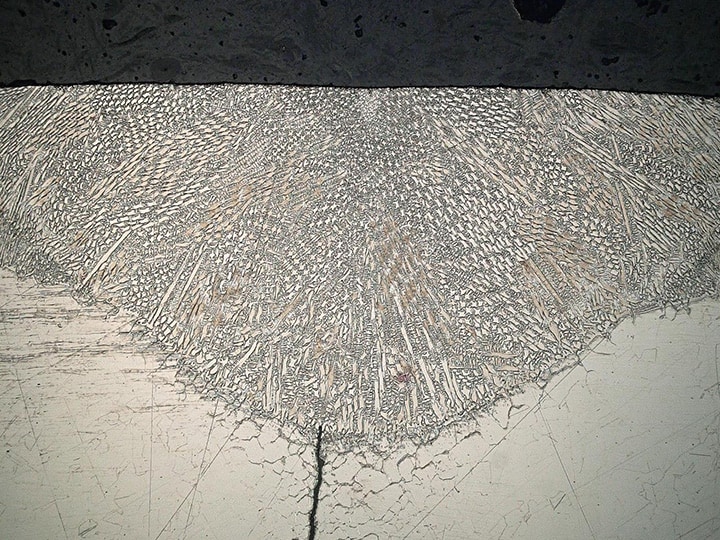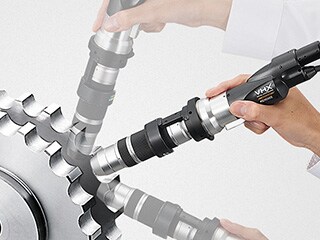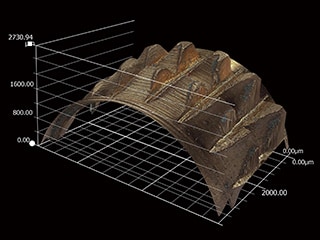Methods for Weld Penetration Structure Observation and Defect Analysis
Welding is employed when joining metal in a diverse range of fields, including the plant equipment and automotive fields. Weld penetration, base material, and bead may suffer defects caused by stress or corrosion from long-term use. For this reason, it is important to observe and analyse the surface and cross-section of welded parts. This section introduces the methodology along with observation and analysis examples using our latest 4K Digital Microscope.

- Importance of Weld Penetration Analysis
- Methods for Observing and Analysing Weld Penetration (Metal Structures)
- Latest Examples of Weld Penetration Observation and Analysis
- New Common Practices of Weld Penetration Observation and Analysis
Importance of Weld Penetration Analysis
Among other metal-joining techniques, welding is a rational, airtight fabrication process used in a wide range of applications. For infrastructure, building structures, automobiles, electrical appliances, and electronic devices, a variety of welding methods are used according to purpose and base material, including different types of arc welding, laser beam welding, and resistance spot welding.
In particular, process equipment at plants is intended to be used for decades. This requirement demands the highest level of welding quality. There are many types of plants, including thermal power plants; petrochemical plants where new materials are made from petroleum; plants that manufacture general chemicals, drugs, and food; water treatment plants for purifying sewage; and industrial waste disposal plants that carry out recycling processes. All of these plants are enormous facilities that deal with liquids and gases with different properties and in different states. When ageing or a defect is detected in the welding, observation and analysis of the surface and cross-section of metal structures are crucial for identifying the problem and cause although they are not easy tasks.
Methods for Observing and Analysing Weld Penetration (Metal Structures)
In the case of large-scale facilities such as plants, micro analysis cannot be performed on the welded structure. For the microscopic observation and analysis of surface or internal defects, such as poor fusion, slag inclusion, or cracks (stress corrosion cracks and fatigue cracks) in the welded part, in most cases the following two types of sample creation methods are used:
- Microscopic observation of sample filled with resin (embedment)
- The welded part with the defect is cut out as a sample and is filled (embedded) with resin for microscopic observation of the welding failure or defect. Because the sample is cut out, it is possible to observe the cross-section of the weld penetration.
- Microscopic observation by SUMP
- “SUMP” stands for Suzuki’s Universal Micro Printing. If a sample cannot be cut out for microscopic observation, the surface of the sample is transferred to a celluloid plate and is observed using an on-site microscope. The replica samples used for electron microscopy are said to have originated from SUMP.
These observation methods involving a creation of samples are not only used in plants, but also with automobiles, aerospace-related equipment, railway vehicles, and ships, where welding failures and defects can lead to major accidents. In each case, the metal structure of the welded part is observed and analysed using surface and cross-section observation and other techniques.
Latest Examples of Weld Penetration Observation and Analysis
Thanks to technological advancement in recent years, digital microscopes have significantly changed magnification clarity and have improved workability of samples for the observation and analysis of weld penetration.
KEYENCE’s VHX Series ultra-high definition 4K Digital Microscope adopts the latest high-resolution lenses, 4K CMOS, lighting options, and image processing technology, thereby enabling observation with clear images and rational analysis.
Cross-section observation and defect analysis of weld penetration structure
The VHX Series 4K Digital Microscope enables quick and easy observation with images fully focused on the entire sample using depth composition from the real-time composition interface. These fully-focused images contribute to clear observation of the condition of the metal structure of the weld penetration and of fine cracks in the base material, regardless of the user’s skill level, thereby helping to prevent problems from being overlooked.

Weld penetration structure observation using SUMP samples
The VHX Series 4K Digital Microscope can observe and analyse SUMP samples and replicas having uneven surfaces and low hue with images fully focused on the entire sample using clear high-resolution images and depth composition from the real-time composition interface.

Achieving on-site micro analysis with handheld observation
The VHX Series 4K Digital Microscope can perform observation and analysis in handheld form, providing clear magnified images produced by the deep depth of field of the dedicated lens. This observation and analysis can eliminate the time, work, and hassle of creating samples as well as enable non-destructive observation and analysis of the actual target on the spot.

A single unit supports various 2D and 3D measurements
The VHX Series 4K Digital Microscope can not only perform clear magnification and observation but measurements and quantification as well.
2D and 3D measurements, roughness measurement, contamination analysis, crystal grain size measurement, and other useful functions for the inspection of metal structures and products can be readily executed from a single machine using easy mouse operations.

New Common Practices of Weld Penetration Observation and Analysis
Observation and analysis of welds and their metal structures are extremely important as these operations closely relate to the safety of various metal products and equipment. Therefore, observation and analysis constantly require accuracy and precision. In addition, speed is also required when problems occur.
The VHX Series is equipped with many other advanced functions. The automatic zoom from 20x to 6000x is available with easy operation and without any need to replace the lens. The Optical Shadow Effect Mode and multi-lighting functions help express the fine details of uneven surfaces clearly. 2D and 3D measurements are performed with easy operations. Settings can be automatically reproduced by selecting saved data. Reports can be automatically created using saved data.
These powerful tools can transform the common practices of weld penetration observation and analysis in terms of clarity of images; operations; and data acquisition, saving, and utilisation.
For details on the VHX Series, click the button shown below to download the catalogue. For inquiries, click the other button shown below to contact KEYENCE.


